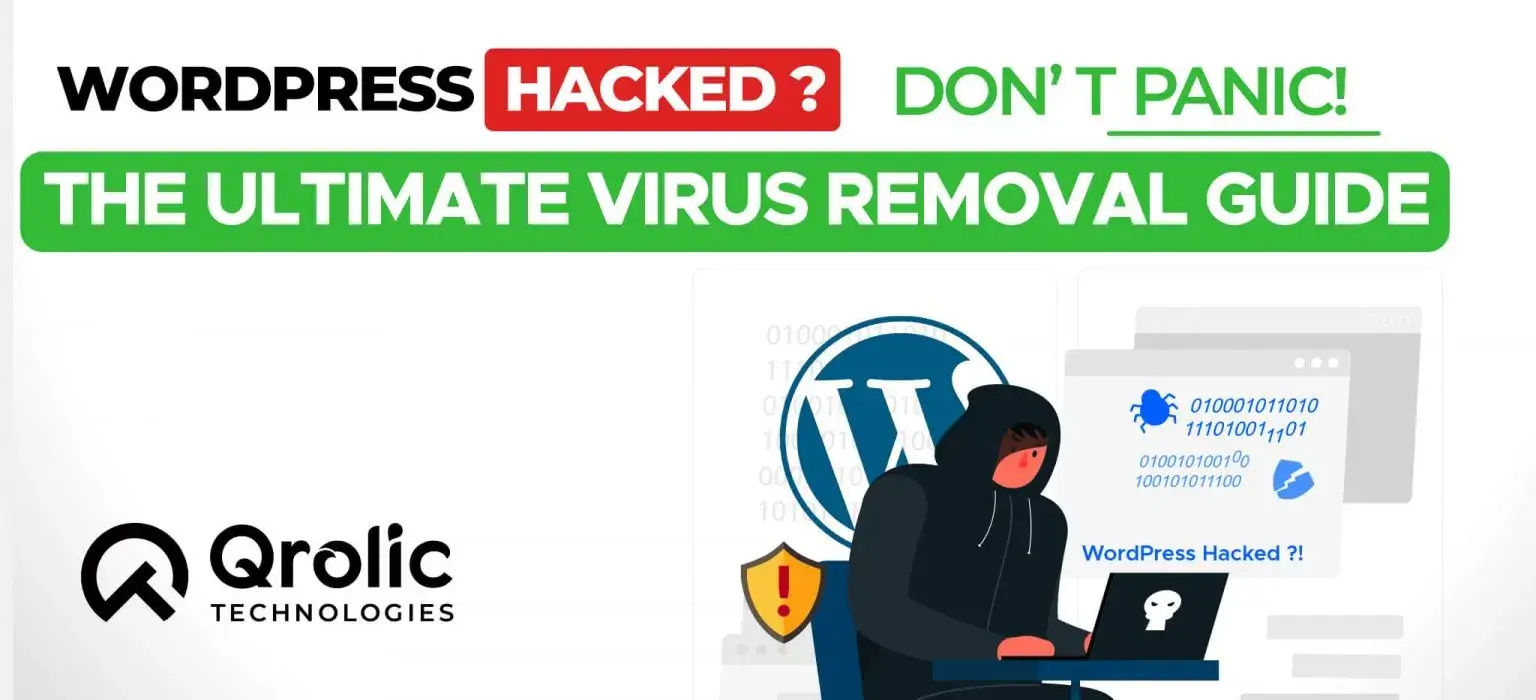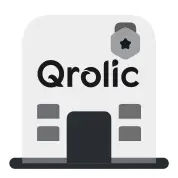In the vast landscape of the internet, a WordPress hacked site can feel like a digital nightmare.
Recognizing the signs of a compromised WordPress site, such as strange content, unauthorized access, or a sudden performance decline, is the first step to regaining control.
WordPress hacked it’s akin to discovering an unwelcome guest in your digital home. Signs may manifest as mysterious posts, unfamiliar links, or a sluggish website, indicating that something isn’t right. Understanding these warning signals is crucial in addressing the situation promptly and effectively.
Quick Summary:
- If hacked, take site offline and change all passwords.
- Scan for malware, remove bad code, and restore from backup.
- Update everything, boost security, and monitor regularly.
Table of Contents
- Immediate Actions
- 1. Take Your Site Offline
- 2. Contact Your Hosting Provider
- 3. Change Passwords and Credentials
- Assessment and Initial Steps
- 1. Isolate and Assess the Damage
- 2. Scan Your Computer for Malware
- 3. Identify and Remove Viruses or Malicious Code
- Recovery and Restoration
- 1. Restore from a Clean Backup
- 2. Update WordPress Core, Themes, and Plugins
- Security Reinforcement
- 1. Implement Security Measures
- 2. Monitor File Changes
- 3. Install a Web Application Firewall (WAF)
- 4. Request a Google Malware Review
- Preventive Measures and Ongoing Maintenance
- 1. Educate Your Team
- 2. Regular Backups
- 3. Continuous Monitoring
- 4. Seek Professional Help
- 5. Preventive Measures for the Future
- Additional Technical Steps for Deep Inspection
- 1. Put Your WordPress Site in Maintenance Mode
- 2. Remove or Reinstall Suspicious and Unnecessary Plugins and Themes
- 3. Update WordPress (Optional)
- 4. Reinstall WordPress Core Files
- 5. Clear Out PHP Files from Uploads
- 6. Inspect the SQL Database File
- 7. Review the Code for Each Page and Post
- Hacked Website FAQs:
- Can a hacked WordPress site affect my visitors’ devices?
- Should I inform my website visitors about a hack and potential data breaches?
- How can I ensure my WordPress security plugins are compatible with each other?
- I don’t understand code. Can I clean up a hacked WordPress site without technical knowledge?
- Are there any free or affordable alternatives to paid security plugins and services?
- How often should I change my WordPress login credentials for maximum security?
- Can I use the same passwords for my WordPress admin and other online accounts?
- Is My WordPress Hosting Provider Responsible for a Hack?
- How Does a Hacked WordPress Site Impact My Search Engine Ranking?
- Can I Sue the Hackers Who Attacked My WordPress Site?
- What Happens to My WordPress Site Data During a Hack?
- How Can I Secure My WordPress Site if I’m Not Tech-Savvy?
- Conclusion
Immediate Actions
1. Take Your Site Offline
As soon as you suspect a breach, act swiftly. Temporarily take your website offline to halt any ongoing damage and shield your visitors from potential threats to remove viruses.
Imagine your website as a ship navigating treacherous waters. Taking it offline is akin to dropping anchor – it stops the potential leaks and ensures the safety of those on board, preventing any further harm.
2. Contact Your Hosting Provider
Your hosting provider is your ally in this situation. Reach out to them promptly, sharing details about the hack for assistance and guidance tailored to your specific situation.
Think of your hosting provider as the guardian of your website’s fortress. By notifying them promptly, you enlist their help in fortifying the gates, ensuring a swift and coordinated response to the security breach.
3. Change Passwords and Credentials
Strengthen your defenses by changing all passwords associated with your WordPress admin, FTP, database, and hosting accounts. This step is crucial to prevent further unauthorized access.
Assessment and Initial Steps
1. Isolate and Assess the Damage
Conduct a thorough examination to isolate compromised files, databases, and affected functionalities. Understanding the range of the damage is key to formulating an effective recovery plan.
2. Scan Your Computer for Malware
Ensure your local machine isn’t the source of the breach. Run a comprehensive malware scan to eliminate WordPress viruses and the possibility of compromised credentials originating from your end.
Think of your computer as the potential gateway through which digital intruders gain access to your website. By scanning for malware, you’re conducting a thorough sweep to ensure that the breach doesn’t originate from your local machine.
3. Identify and Remove Viruses or Malicious Code
Dive into your website’s code, scrutinizing for injected or suspicious scripts. Removing these elements is crucial for restoring the integrity of your WordPress site. Consider your website’s code as its DNA. Identifying and removing malicious code is akin to performing surgery to extract harmful elements, allowing your website to heal and function normally once more.
Recovery and Restoration
1. Restore from a Clean Backup
If you have a clean backup from before the security breach, restore your website to its pre-infected state from the WordPress virus. A clean backup is your ticket to a secure starting point.
2. Update WordPress Core, Themes, and Plugins
Keep your WordPress core, themes, and plugins up-to-date to patch vulnerabilities that may have been exploited during the breach.
Security Reinforcement
1. Implement Security Measures
Fortify your website’s defenses by implementing security plugins, configuring firewalls, and adopting best practices such as strong passwords and two-factor authentication.
2. Monitor File Changes
Stay vigilant by regularly monitoring file changes. Security plugins or tools can assist in detecting unauthorized modifications promptly.
Think of monitoring file changes as having a digital security guard on patrol. Regular checks ensure that any suspicious activities are detected and addressed swiftly, preventing potential breaches before they escalate.
3. Install a Web Application Firewall (WAF)
Add a secured layer of protection with a WAF to filter and stop malicious traffic before it gets to your website. Consider a Web Application Firewall as the sentry at the entrance of your digital fortress. Filtering and blocking malicious traffic acts as the first line of defense, preventing potential threats from reaching your website.
4. Request a Google Malware Review
If search engines blacklist your site, request a review through Google Search Console to remove the warning.
Preventive Measures and Ongoing Maintenance
1. Educate Your Team
Ensure that all users with website access are educated on security best practices to minimize the risk of future breaches.
2. Regular Backups
Set up and maintain regular backups, providing a safety net for quick restoration in case of future security incidents.
3. Continuous Monitoring
Implement tools or services for continuous monitoring, identifying potential security threats before they escalate.
Think of continuous monitoring as having a watchtower overlooking your digital fortress. By keeping a constant eye on your website’s health, you can spot potential threats early and take preventive actions before they become major issues.
4. Seek Professional Help
Consider seeking assistance from professional security experts if the situation is beyond your expertise. Experts can give you the control back to your WordPress hacked site.
5. Preventive Measures for the Future
Outline a plan for regular software updates, strong passwords, and ongoing security audits to minimize the risk of future hacks.
Additional Technical Steps for Deep Inspection
1. Put Your WordPress Site in Maintenance Mode
Secure your site during recovery by putting it in maintenance mode. Imagine putting your site in maintenance mode as closing the doors temporarily for repairs. It ensures that while the recovery process is ongoing, your website is shielded from potential visitors, allowing you to focus on the necessary tasks without distractions.
2. Remove or Reinstall Suspicious and Unnecessary Plugins and Themes
Eliminate potential security risks by removing or reinstalling suspicious plugins and themes.
3. Update WordPress (Optional)
Optionally, ensure that your WordPress version is up-to-date for added security. Think of updating WordPress as adding an extra layer of armor to your digital fortress. While optional, it provides an additional level of protection against emerging WordPress viruses, reducing the risk of vulnerabilities in the WordPress core.
4. Reinstall WordPress Core Files
Eliminate potential compromises in the WordPress core by reinstalling core files.
Consider reinstalling WordPress core files as restoring the foundation of your digital fortress. By ensuring the core is free from compromises, you’re establishing a solid base for the continued security of your website.
5. Clear Out PHP Files from Uploads
Clean the uploads directory to remove any suspicious PHP files.
Think of clearing out PHP files as decluttering your website’s storage space. By removing any potentially harmful files, you’re creating a cleaner and safer digital environment.
6. Inspect the SQL Database File
Thoroughly inspect the SQL database file for any malicious entries. Consider the SQL database file as the repository of your website’s vital information. By inspecting it thoroughly, you ensure that no malicious entries linger, safeguarding the integrity of your data.
7. Review the Code for Each Page and Post
Examine the code for each page and post to ensure there are no injected malicious scripts.
Hacked Website FAQs:
Can a hacked WordPress site affect my visitors’ devices?
Yes, unfortunately, it is possible. Malicious code injected into your site could redirect visitors to phishing pages designed to steal their information or even download malware onto their devices. This risk increases if the attack targets vulnerabilities in plugins or themes used by your visitors.
Should I inform my website visitors about a hack and potential data breaches?
Transparency is crucial. If you suspect a data breach, immediately inform your visitors through a public announcement on your website and social media. Be transparent about the nature of the breach, what data was potentially compromised, and the steps you’re taking to address the issue and protect their information.
How can I ensure my WordPress security plugins are compatible with each other?
Always research plugin compatibility before installation. Look for plugins actively maintained by reputable developers and check compatibility information on their websites or plugin repositories. Consider testing plugin combinations on a staging site before implementing them on your live site.
I don’t understand code. Can I clean up a hacked WordPress site without technical knowledge?
While advanced cleanup may require technical expertise, basic recovery steps are attainable. Secure your site by changing passwords, taking it offline, and updating WordPress core, themes, and plugins. Use security plugins like Sucuri or Wordfence to scan for malware and suspicious activity. Consider seeking professional help if the hack seems complex or data breaches are suspected.
Are there any free or affordable alternatives to paid security plugins and services?
Yes, several free security plugins offer essential protection. Options like Wordfence Security, WP Security Audit, and iThemes Security offer malware scans, firewall features, and login security measures. While they may not have all the bells and whistles of premium solutions, they provide a solid foundation for basic website protection.
How often should I change my WordPress login credentials for maximum security?
As a general rule, change your WordPress login credentials at least every 3-6 months. Use strong, unique passwords for each online account, avoid easily guessable information, and enable two-factor authentication for an extra layer of security.
Can I use the same passwords for my WordPress admin and other online accounts?
Absolutely not! Reusing passwords across different accounts is a huge security risk. If one account is compromised, hackers can easily gain access to all your other accounts using the same password. Always use unique, complex passwords for every online account you have.
Is My WordPress Hosting Provider Responsible for a Hack?
While your hosting provider isn’t responsible for preventing all hacks, they do have a duty to maintain a secure server environment. If your site is hacked due to vulnerabilities in the hosting infrastructure, they may be held liable. However, in most cases, the responsibility lies with website owners to secure their own WordPress install, plugins, and themes.
How Does a Hacked WordPress Site Impact My Search Engine Ranking?
Search engines like Google penalize hacked websites, impacting search ranking and visibility. A hacked site may display warnings to users, deterring them from clicking through. Additionally, if the hack injects malicious content or redirects users to suspicious sites, search engines may blacklist your website altogether.
Can I Sue the Hackers Who Attacked My WordPress Site?
Suing hackers can be difficult and expensive. Identifying the perpetrators is often challenging, and even if you succeed, collecting damages can be complex. The legal expenses involved may outweigh the potential benefits of litigation. Focusing on recovering from the hack and preventing future attacks may be a more practical approach.
What Happens to My WordPress Site Data During a Hack?
The impact of a hack on your data depends on the hacker’s objectives. They may steal confidential information like user logins, credit card details, or personal data. They may also corrupt or delete content, disrupt functionality, or inject malicious code. Regular backups are crucial to minimize data loss and facilitate quick recovery.
How Can I Secure My WordPress Site if I’m Not Tech-Savvy?
Even without technical expertise, you can take steps to secure your WordPress site or you can ask a specialized WordPress agency to maintain your website:
– Use strong passwords and enable two-factor authentication.
– Upgrade WordPress core, themes, and plugins regularly.
– Install a reputable security plugin and keep it updated.
– Regularly update your hosting environment.
– Back up your website regularly.
Conclusion
Reclaiming a WordPress hacked site is a journey demanding both caution and proactivity. Emphasize the importance of remaining vigilant and proactive in maintaining your website’s security even after recovery and when you remove the virus. By following these essential steps and using preventive measures, you can fortify your WordPress fortress against future threats from the WordPress virus.
As you turn the page from a challenging chapter, remember that the key to a secure digital future lies in continuous learning, adaptation, and building defenses stronger than ever. Your website is not defined by a single breach but by your commitment to learning, adapting, and conquering the digital world securely. Get in touch today!









